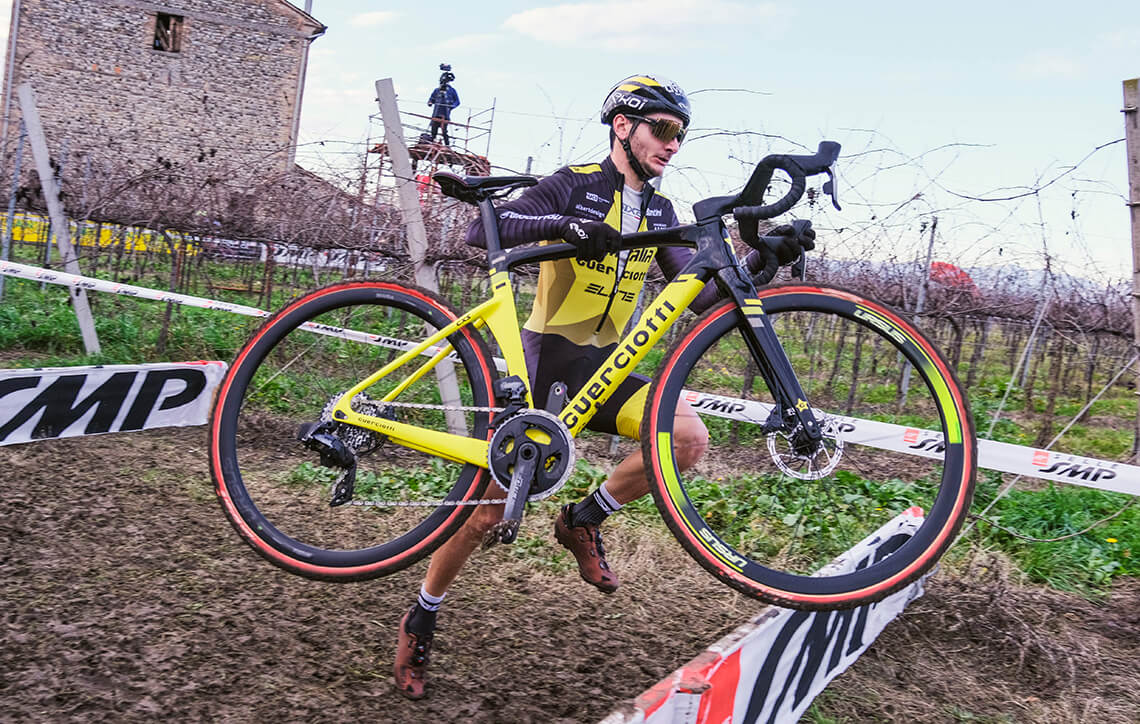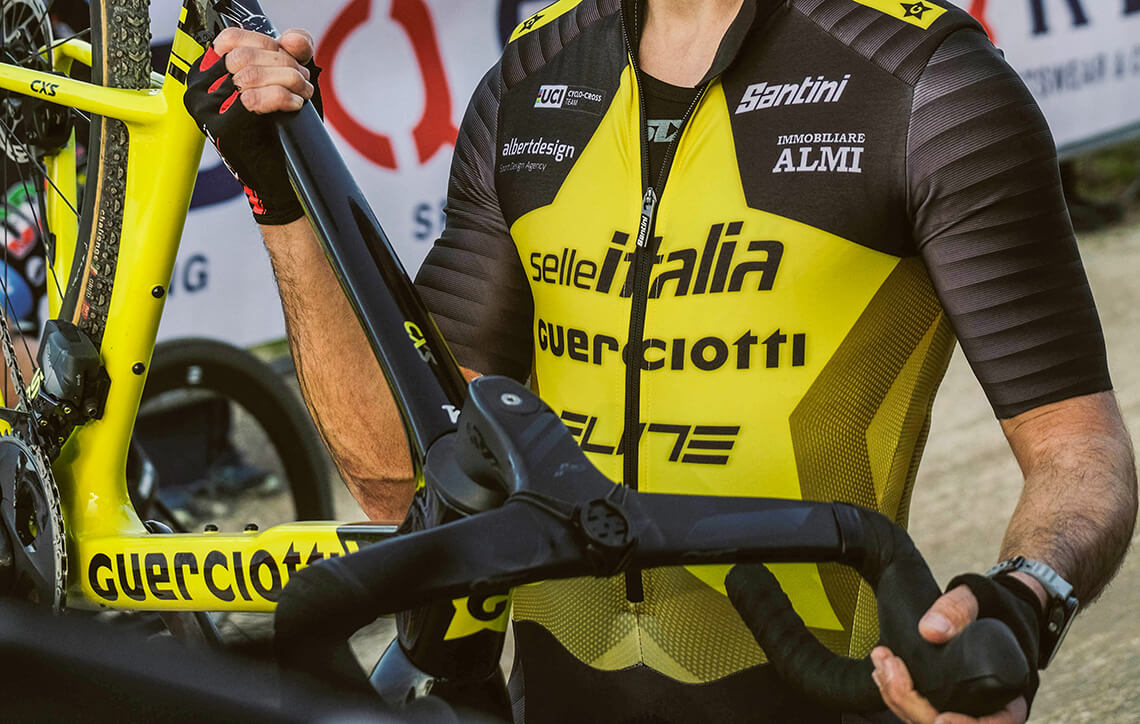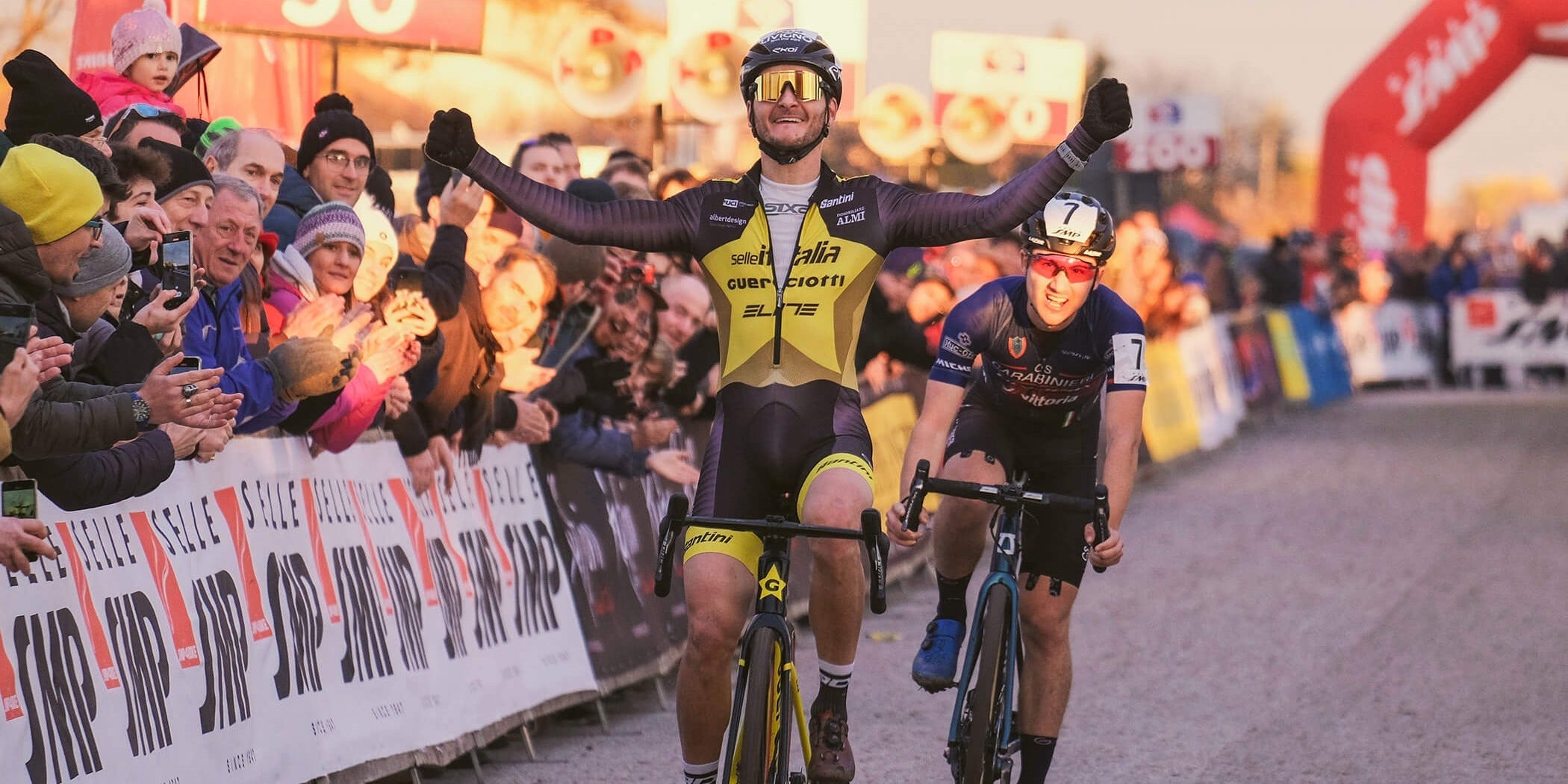Gioele Bertolini of the Selle Italia Guerciotti Elite team is one of Italy's top cyclocross athletes, accustomed to competing at international levels. He shared his experience with us, explaining how the Italian cyclocross movement can evolve to reach the level of its Belgian and Dutch counterparts.
Born in 1995, hailing from Valtellina, he's accustomed to competing with Belgian, Dutch, and German champions on cyclocross courses around the world. Here's how he prepares to compete at such a high level in cyclocross.
Gioele, what does cyclocross mean?
First of all, I want to tell you that cyclocross is a sport you either love or hate. This isn't a discipline for half measures. Sacrifices are the order of the day: for us Italians, competing against athletes, especially Belgians, Germans, and Dutch, means having to raise the bar significantly compared to when we race in our own country. In Belgium and the Netherlands, cyclocross is a truly national sport, like soccer here, so it's normal to find a higher level of competition, experience, and training among our opponents abroad. This is a first consideration I'd like to make to you if you're about to start practicing cyclocross, thinking you want to excel: hey... It's not easy at all, just know that. You have to think big: if you decide to overcome the initial difficulties, as in all things, you will achieve great satisfaction, which I obviously hope for you. Cyclocross today means never giving up: when your legs hurt, when the cold, rain, and mud put you to the test. Cyclocross is a challenge first against yourself and then against others. opponents.”

How do you prepare for these real mud challenges?
My training sessions are designed to prepare me to be the most complete athlete possible. As you can imagine, cyclocross races put a lot of physical strain on riders. In addition to the sections of track to be covered on bike, we normally encounter uphill sections (often on sandy surfaces). It's a question of legs, strength, but also agility and stamina. To train all these qualities, I combine the gym, cycling, and running. Those who focus their competitive activity solely on cyclocross usually plan for intense summer preparation. This way, they can schedule some running and gym sessions during the season, staying in top condition for longer. This typically happens to riders from Northern Europe. In my case, the spring months and the first part of summer are dedicated to mountain biking, which means the time available for specific physical preparation for cyclocross is limited. Obviously, this doesn't work to my advantage, forcing me to use the first official appointments to find my best condition. My typical week consists of: "It's made up of five training sessions that add up to the weekend race. Two days a week are dedicated to gym work, and one day to running. I ride my bike on all five training days, even after the gym session. I mainly do road workouts, while one day a week I focus on cyclocross. This last activity is important for refining my technique and getting me ready for race pace."
What is missing for Italian cyclocross to reach the levels of Northern European cyclocross?
“We were once the leaders in this discipline in Italy. The Selle Italia Guerciotti Elite team boasts several world titles and has had major international success. Over the years, we've invested little and, unfortunately, we've lost ground compared to Belgium, the Netherlands, and Germany. In recent years, the numbers have grown significantly; fortunately, the number of young people taking up cyclocross is constantly increasing. What do we need to excel abroad in a few years? I'd say, above all, suitable tracks : when you leave Italy, you'll find extremely difficult courses, for example in Switzerland, where they resemble MTB circuits. In the Netherlands and Belgium, you'll encounter sandy tracks, where you can never stop pushing. The Italian courses have been kept much simpler in recent years to broaden the participation opportunities to as many young people as possible, but today we need to find a formula that allows the best to compete with higher difficulty levels. Only in this way will we be able to leave Italy and challenge the best in the world on equal terms. I'm confident, however; I'm seeing our team grow. movement”.

Any final advice from Gioele Bertolini for those starting out in cyclocross?
"To improve, you definitely need to train well, but it's also very important to try to "steal" a movement, a style, and a bit of experience from those around you . Especially in competitions, you can sometimes see athletes doing extraordinary things: try to emulate them, trying and trying the movements you've seen will allow you to become increasingly stronger."
What's behind a cyclocross wheel and what should you know to choose the best wheel for your needs?
Find out in this interview with Andrea Zen, Ursus engineer





